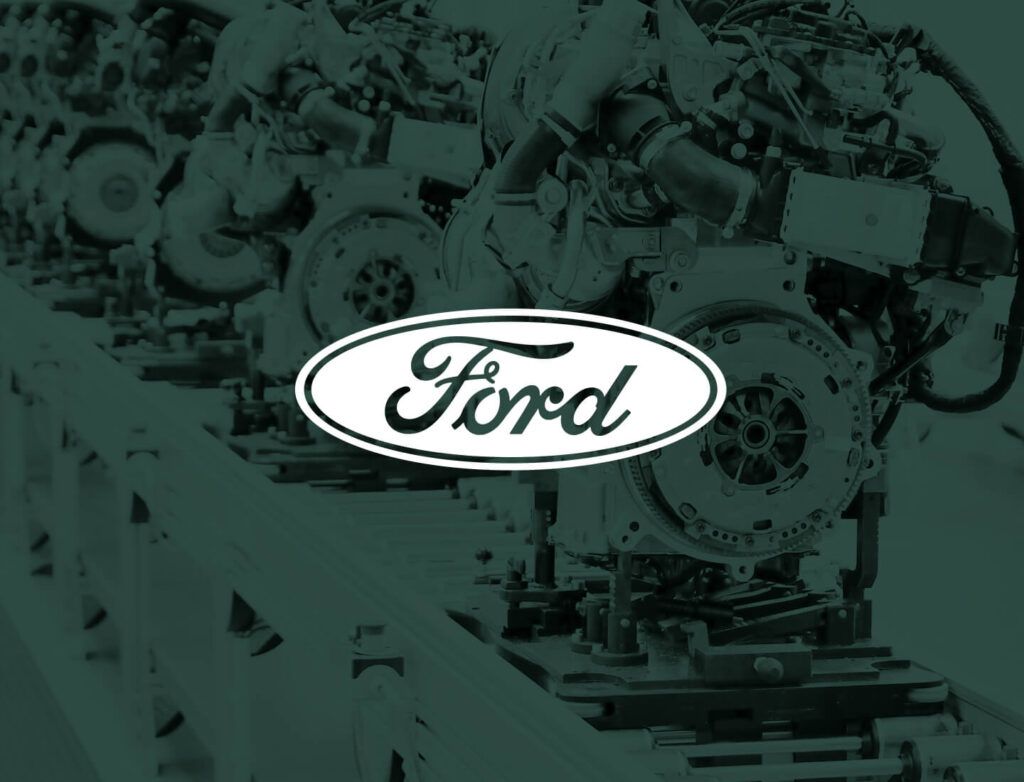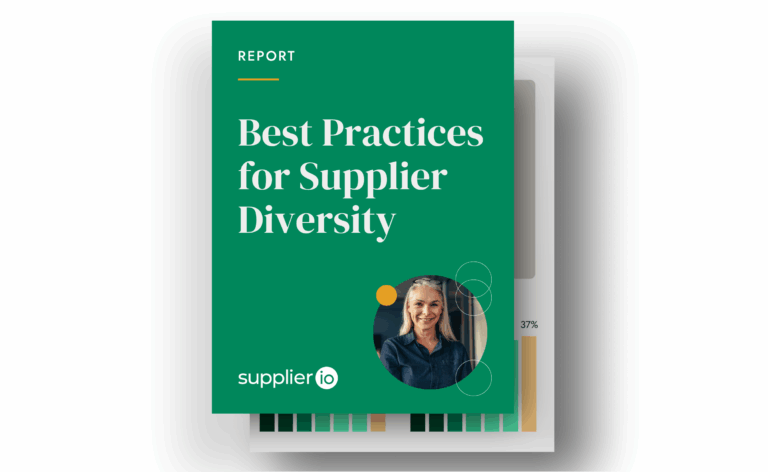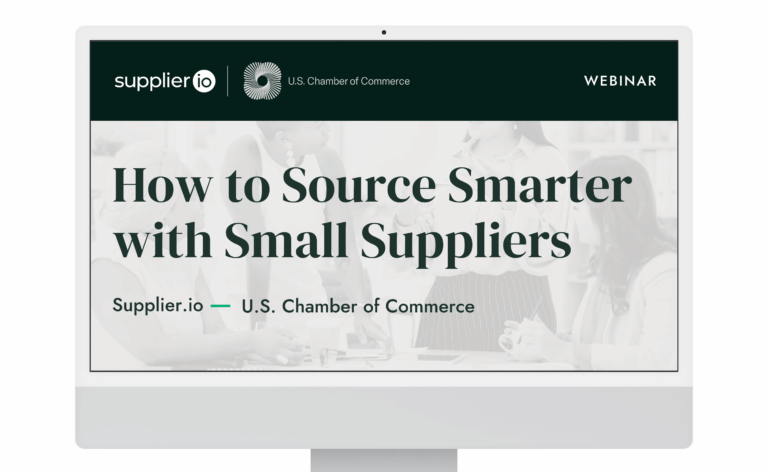Customer Spotlight: Ford (Part 1)
Supplier diversity is in the DNA at Ford. But it was getting difficult to manage all the different suppliers and requests. Learn how a supplier registration portal helped them scale their program.

Ford Motor Company has a long history of commitment to supplier diversity. The company launched its supplier diversity initiative in 1968, and currently includes diverse businesses owned and operated by minorities, women, veterans, LGBTQ, disabled, and small business owners.
Ford spent $11.1 billion with diverse suppliers and small businesses in 2019, the most of any automotive OEM, relying on these suppliers to bring creative solutions to the table. These diverse businesses are crucial to the company’s competitive advantage.
“Supplier diversity is important to Ford because it’s a business strategy that impacts our bottom line,” said Cameron Boli, Ford Supplier Diversity Analyst. “Statistics show that companies that have diversity and inclusion departments are more profitable. Statistics also show that when you do business with diverse suppliers, they bring fresh, innovative, and new perspectives to the table which can drive competition.”
Partnering with diverse-owned businesses can influence consumers. For example, Boli noted that when Ford enabled minorities and women the opportunity to own Ford dealerships, the number of minorities and women buying Ford vehicles increased. Likewise, by working with the marketing department to promote Ford’s partnerships with diverse suppliers, the company can create messaging that resonates with an increasingly diverse consumer base.
“When customers discover that supplier diversity is important to Ford—for example, if 30 percent of the content on an F-150 is supplied by diverse-owned businesses—that’s a motivator or an incentive for minority customers to buy that vehicle,” Boli said.
But 50 years after recognizing the importance of supplier diversity, Ford’s leadership wanted to increase the program’s effectiveness. Despite the overall progress in the supplier diversity space, the potential to do more—to better leverage diverse suppliers to impact Ford’s bottom line—drove the company to seek innovative solutions.
The Challenge
Like most supplier diversity programs, resources and personnel are limited at Ford. The team consists of four people working under Travis Spencer, Head of Supplier Diversity & Inclusion. Managing diverse suppliers for such a vast enterprise across 7 commodity groups as well as indirect sourcing, requires tools and systems that maximize resources.
A primary challenge for Ford’s supplier diversity office was following up with suppliers in meaningful ways. Suppliers would register in Ford’s portal, where they stayed without any reviews as the supplier diversity team struggled to manage the volume.
“We have historically struggled with supplier follow-ups,” Boli said. “It’s hard to follow up with hundreds of suppliers when there are just four of you. This was not only an issue in terms of finding diverse suppliers, but it was also hurting our reputation. People talk and if they’re saying, ‘We registered in your portal but never heard from you,’ that’s not a good look. We wanted to uphold the integrity of the program.”
Furthermore, Boli said, they needed a reliable process to vet suppliers before introducing them to the Purchasing organization and commodity groups.
“In the past, because we didn’t have a good process in place. Buyers would be introduced to suppliers that just weren’t up to par to doing business with Ford Motor Co.,” he said. “We needed to do better.”
The Solution
Ford completely reevaluated its supplier registration process, including streamlining follow-ups and vetting potential suppliers. Using supplier.io’s supplier registration portal, customized for the company’s needs, the team built a new, five-phase supplier follow-up process that they then rolled out in 2019.
Ford’s 5 Phase Diverse Supplier Introduction Process
- Registration confirmation
- Initial assessment
- SD&I Interview
- Introduce supplier to purchasing organization
- Opportunity assessment
While brainstorming what they needed, the supplier diversity team targeted ease of communication as a primary need. They utilized the tools available in their supplier portal to automate and enhance supplier communication, saving the team countless hours of repetitive work.
“We have the ability to communicate with the suppliers through the portal so they don’t have to reach out to us via email all the time,” Boli said. “We keep them engaged by keeping them informed about what’s going on in each phase.”
Ford’s supplier diversity team also customized the registration process to require a capability statement, a document many suppliers neglected to provide in the past. The lack of a capability statement increased the supplier diversity team’s workload during the vetting process. Now Ford is able to collect the bulk of the information it needs to vet diverse suppliers via the registration portal, freeing up the supplier diversity team to build relationships with and find opportunities for diverse businesses.
“Our supplier registration process is really important because it gives us the ability to keep on record the diverse suppliers we interact with at conferences, events, etc.,” Boli said. “It’s a platform that gives us the ability to house our prospective suppliers’ capability statements and all of the information pertaining to their company that we would need in order to make a decision on whether or not we want to do business with that company.”
The Results
Since creating and implementing the new five-phase follow-up process last year, Ford’s supplier diversity team has identified three diverse suppliers that are on track to win bids with Ford in 2020. Engagement with suppliers has increased, the entire commodities purchasing organization now has specific supplier diversity strategies, and the vetting process is winning points with internal buyers.
“Our Purchasing organization appreciates that our supplier diversity office is being more proactive and vetting the suppliers before we introduce them,” Boli said. “In fact, our Purchasing organization is considering adopting our follow-up process for non-diverse suppliers.”
The follow-up and vetting process the supplier diversity team developed is now considered a best practice within the company—and beyond. Several other automotive OEMS have reached out to Ford to benchmark their Supplier Introduction process.
“We’re happy to share details of our processes with other OEMS,” Boli said. “The stronger our supplier diversity programs are throughout the industry, the better. We still have areas to improve and will continue to refine our processes, but what we’ve implemented so far has already made a tremendous difference in our supplier diversity program.”




